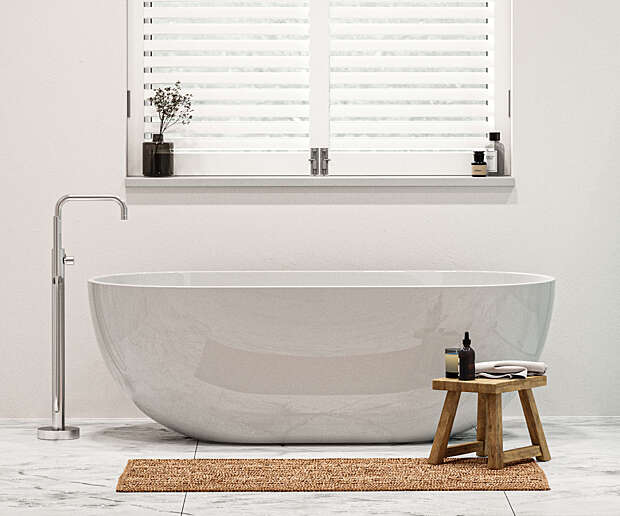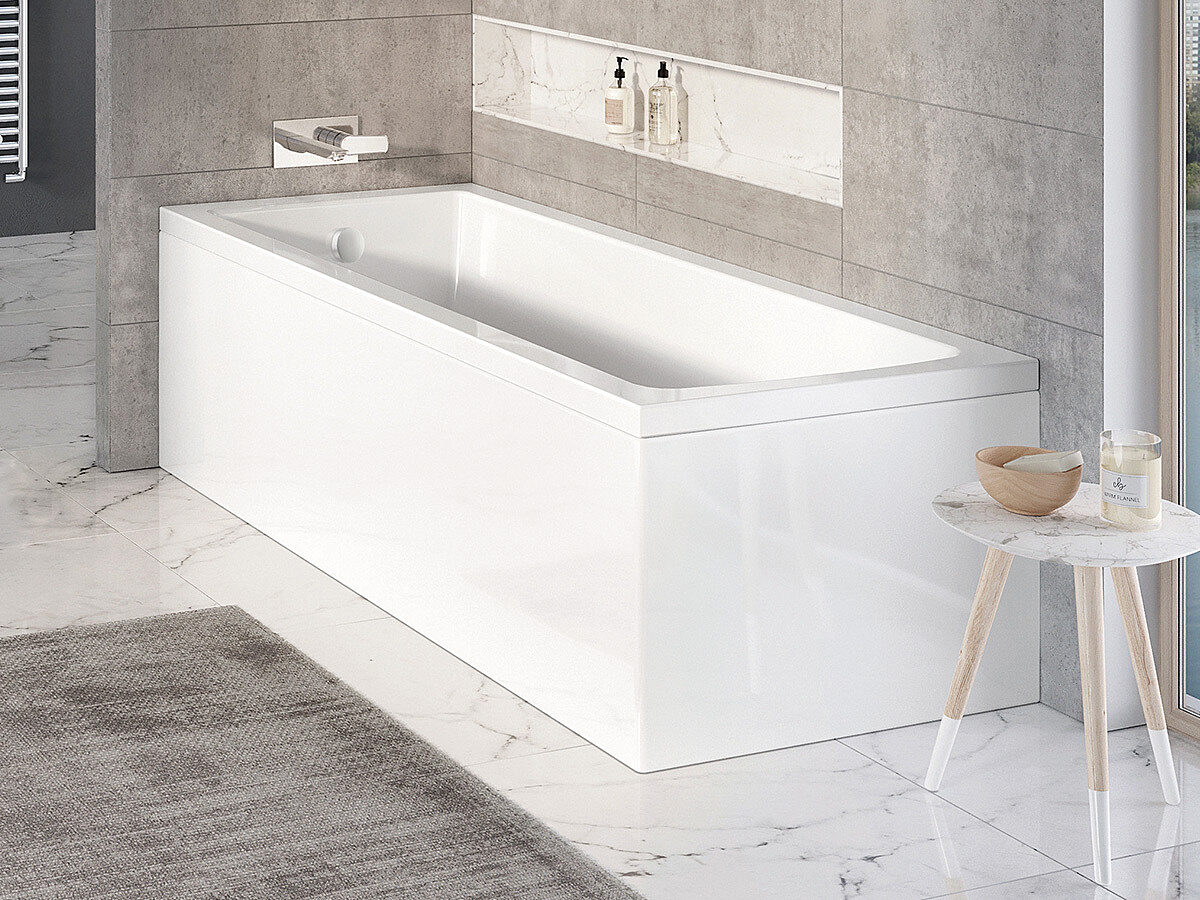What are the different types of acrylic bath tubs?
May 2023

What are the different types of acrylic bath tubs?
Acrylic baths are considered to be the most common material available when looking for a bath. This is due to a number of factors which make them a durable and reliable choice. Firstly, acrylic bath tubs are lightweight and easy to transport so provide few complications when it comes to installation.
They are also incredibly hardwearing and easy to clean, meaning they can be enjoyed for many years to come with no high maintenance upkeep. As acrylic is a non-porous material, it ensures bacteria or mould cannot grow on the surface and makes it very easy to polish out any defect or scratches in the acrylic.
Most of these types of baths are manufactured from sheets of acrylic which are typically 4, 5 or 8mm thick, with those on the thicker end of the spectrum often considered a more premium option. Generally fortified with fiberglass for additional durability on the underside of the design, these baths are also reinforced underneath – normally with a wood baseboard in the centre of the bath and a wooden or steel support frame.
A huge benefit of acrylic baths is that they are naturally warm to the touch and retain the water temperature for longer than baths made from other materials, which makes them the ideal choice for a lovely, long soak.
If you’re looking to purchase an acrylic bath, there a lots of different types of baths to choose from – such as single or double-ended, corner and freestanding designs, shower baths and more.
Read on to find out which is best for your next bathroom project…

Single Ended Baths
The most common design on the market, these baths are rectangular in shape with numerous size options available to suit most households. A single ended bath design indicates that the overflow and water waste (and so usually the tap) sit at one end of the bath, with the other side sloped for comfort to rest your back against. They can be supplied with a front and end panel which are usually made from the same material as the bath and can be easily cut for installation.
Double Ended Baths
These have similar features to the single ended bath, with the difference being that the tap and waste position is situated in the centre of the design - rather than at one end. A double ended bath allows people to bathe comfortably at either end and is considered a slightly more premium choice. It also means the tap is within easy reach when you’d like a top up of warm water – small changes which make the bathing experience a little more luxurious.

Shower Baths
Shower baths provide the best option when there is a requirement for a bath and shower but space is a little more limited. They are a perfect addition to a main bathroom and make a huge difference if there are multiple people in the home who prefer a shower – saving everyone from walking through a main bedroom into an en-suite, or for when you have guests staying over. Most shower baths can have a bath screen added easily, and generally have a bulge or widening at one end to maximise the space for showering. This makes the bath either left-handed or right-handed which is important to consider at the purchasing stage to ensure the right one turns up! Shower baths are normally supplied with a panel to suit.

Freestanding Baths
These beautiful bath tubs are designed to be freestanding, with no requirement to fit against the wall. An acrylic freestanding bath tub offers the best of both worlds, with a luxury design made from a durable material to ensure maintenance is kept to a minimum. This type of bath has a distinctly premium feel and is often found in larger bathrooms due to the additional space needed for things like a freestanding bath tap set outside the tub. Within the freestanding bath market alone you will find a number of different designs, such as those with a ledge or more traditional roll top styles.
D-Shaped Baths
D-shaped acrylic baths feature a back-to-wall design which gives the look of a freestanding bath, but with a flat back side for fitting up to a wall. These normally come as one piece meaning there is no requirement for a separate bath panel, and are a great choice for those who love the look of a freestanding design but are concerned about the amount of space they may take up. A D-shaped bath design allows for the taps to be deck-mounted as with standard designs fitted to the wall, so often requires less fuss when it comes to plumbing than a freestanding model.
Now you have a better idea of the style of bath you want to choose, we’ve answered a few common questions below when it comes to opting for an acrylic bath.
How to stop an acrylic bath from going yellow?
So you’ve got a beautiful white bath with a matching white panel, but in a matter of just a few years the bath panel has noticeably gone terribly ‘off white’ against the bath tub that remains white. Why does this happen?
Most bath tubs are made from a premium grade acrylic, which as we’ve mentioned above is reinforced with fiberglass for added strength. However, many bath panels are made of ABS (Acrylonitrile Butadiene Styrene) which is a cheap plastic compound and is easy to manufacture. Bath panels made using ABS tend to yellow more than other materials due to things like light and heat exposure, and it is thought that the bromine added to ABS is the cause of this yellowing.
Tissino baths are made with a special Perma Bianco coating, which is an advanced technology that creates strong, rigid construction with a beautiful finish that won’t discolour over time. The best way to stop your bath from going yellow is to ensure the material it is made from isn’t made with ABS and uses technology such as our Perma Bianco coating, designed specifically to overcome discolouration.
What is the difference between steel and acrylic baths?
Steel and acrylic are the two most commonly used types of bath material, with distinct differences. Steel baths can be found in different thicknesses, and the thicker ones are very difficult to chip should something be dropped in the bath. However, the thinner steel baths are easy to chip, and more difficult to mend in comparison to a chip in acrylic. Steel baths normally have a cold surface which is generally noticeable when bathing, though this makes them a good conductor of heat and allows the bath to stay hotter for longer.
As technology and manufacturing capabilities have advanced, most acrylic baths have too, and are now equally as strong as a steel bath. The most significant difference between acrylic and steel aside from aesthetic is the price point, with acrylic being a much more affordable option for many.
Ready to find your new acrylic bath? Our bathing collections offer a range of designs, from single ended baths to freestanding bath options – all of which feature our Perma Bianco technology.